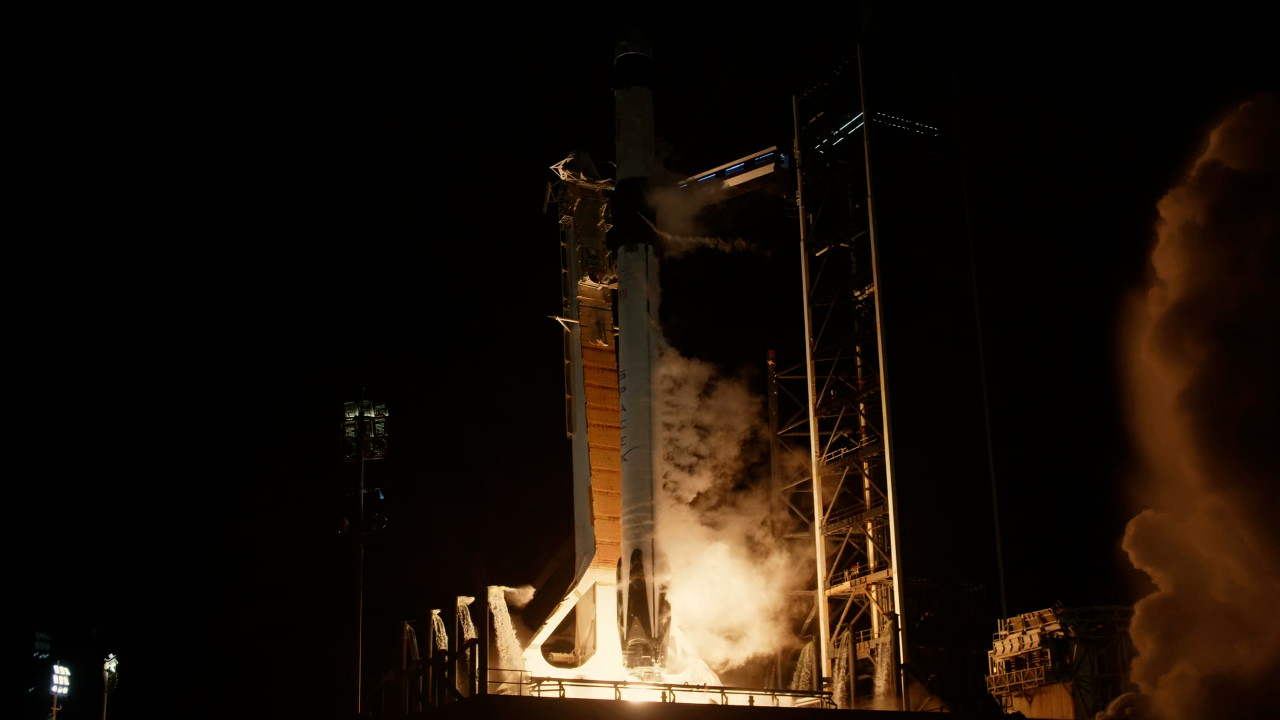
An international crew of four reached orbit following a successful launch to the International Space Station at 10:53 p.m. EST Sunday from Launch Complex 39A at NASA's Kennedy Space Center in Florida. NASA's SpaceX Crew-8 mission is the agency's eighth commercial crew rotation mission with the company to the space station.
A SpaceX Falcon 9 rocket propelled the Dragon spacecraft into orbit carrying NASA astronauts Matthew Dominick, Michael Barratt, and Jeanette Epps, along with Roscosmos cosmonaut Alexander Grebenkin, for a science expedition aboard the orbital laboratory.
"Congratulations to NASA and SpaceX on another successful launch to the International Space Station! On this eighth crew rotation mission, we are once again showing the strength of our commercial partnerships and American ingenuity that will propel us further in the cosmos," said NASA Administrator Bill Nelson. "Aboard the station, the crew will conduct more than 200 science experiments and technology demonstrations to help fuel this new era of space exploration and benefit humanity here on Earth."
During Dragon's flight, SpaceX will monitor a series of automatic spacecraft maneuvers from its mission control center in Hawthorne, California. NASA teams will monitor space station operations throughout the flight from the Mission Control Center at the agency's Johnson Space Center in Houston. NASA coverage continues with audio only commentary until the start of the rendezvous and docking broadcast.
The Dragon spacecraft, named Endeavour, will dock autonomously to the forward port of the station's Harmony module about 3 a.m. Tuesday, March 5. NASA will provide live coverage of rendezvous, docking, and hatch opening, beginning at 1 a.m., on NASA+, NASA Television, the NASA app, YouTube, and the agency's website. NASA also will continue coverage of the crew welcome ceremony once they are aboard the orbital outpost. Learn how to stream NASA TV through a variety of platforms including social media.
Crew-8 will join the space station's Expedition 70 crew of NASA astronauts Jasmin Moghbeli and Loral O'Hara, ESA (European Space Agency) astronaut Andreas Mogensen, JAXA (Japan Aerospace Exploration Agency) astronaut Satoshi Furukawa, and Roscosmos cosmonauts Konstantin Borisov, Oleg Kononenko, and Nikolai Chubb. For a short time, the number of crew aboard the space station will increase to 11 until Crew-7 members Moghbeli, Mogensen, Furukawa, and Borisov return to Earth a few days later.
Crew-8 will conduct new scientific research to prepare for human exploration beyond low Earth orbit and benefit humanity on Earth. Experiments include a study of brain organoids to understand neurodegenerative disorders, shifts in body fluids during spaceflight, and the effects of UV radiation and microgravity on plant growth. These are just a few of the more than 200 science experiments and technology demonstrations that will take place during their mission.
With this mission, NASA will maximize use of the space station, where astronauts have lived and worked continuously for more than 23 years testing technologies, performing science, and developing the skills needed to operate future commercial destinations in low Earth orbit and explore farther from Earth. Research conducted on the space station provides benefits for people on Earth and paves the way for future long-duration trips to the Moon and beyond through NASA's Artemis missions.






